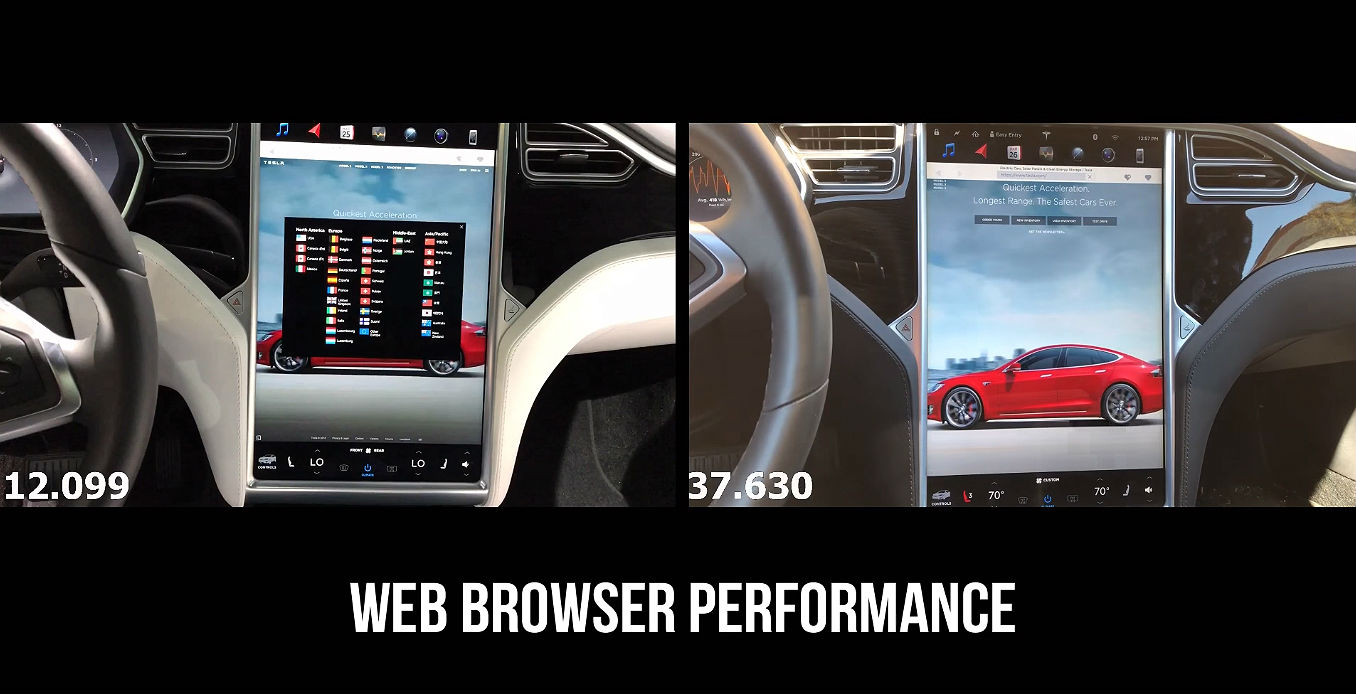
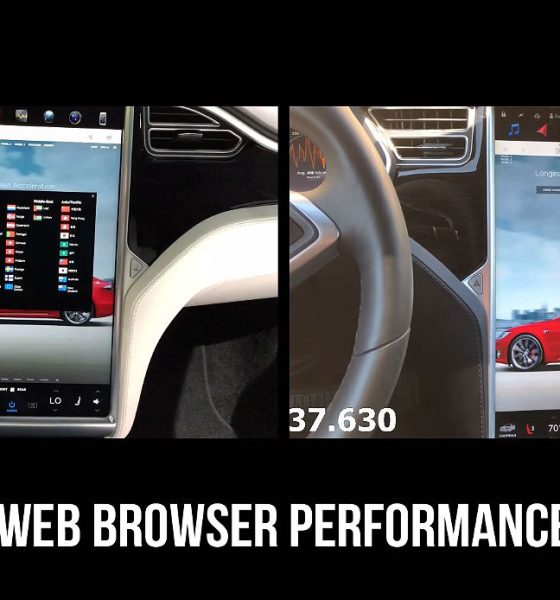
News
Tesla Model S, X MCU controlled test shows new media control unit is 2x faster
Tesla’s new Media Control Unit for the Model S and Model X was recently put through a controlled test against the company’s old MCU. The video, recently uploaded by My Tesla Adventure on YouTube, showed that the new MCU was around twice as fast as the NVIDIA Tegra-3-powered units on Tesla’s older vehicles.
The controlled test covered four different features of the media control unit — destination navigation, vector map responsiveness, dash navigation button speed, and of course, the built-in web browser. Both vehicles were hooked up to the same Wi-Fi network, putting the electric cars on even ground.
The first test involved destination navigation, with the Tesla enthusiast instructing both cars to navigate to Tesla’s delivery center in Marina Del Rey, CA. The new MCU was able to calculate the route, suggest charging stops, and set the destination in 9.27 seconds. The older MCU unit displayed the same data in 20.73 seconds.
Zooming in and out of the electric cars’ vector maps was roughly twice as fast in the newer MCU, with the newer unit being able to zoom out to the US map and zoom in back to the vehicle’s location in 27.97 seconds. The older MCU took 54.59 seconds to accomplish this task. My Tesla Adventure, however, noted that the true difference-maker with the old and new MCUs was the responsiveness of the updated media control unit.
“When testing the manual map navigation with vectoring, I noticed that it was hard to navigate with the old MCU because of the delay in response times from my finger inputs and the responsiveness of the screen. So it resulted in me kind of sliding all over the place on the map and going to places I didn’t intend to go.”
The difference in the old and new MCU’s speed when navigating through the dash buttons was less prominent. As could be seen in the video, the new unit was slightly faster than the new MCU, but the older media control unit was still fast and responsive. The cars’ web browser, however, showed the biggest difference in performance and speed. Loading Tesla.com from Google.com took the new MCU 12.10 seconds. The older media control unit, however, took a whopping 48.32 seconds before it was able to load the official Tesla website.
As we previously noted in a report, a Tesla spokesperson has confirmed with Teslarati that hardware changes to the onboard displays of Model S and Model X vehicles have been initiated by the company as part of Tesla’s continuous effort to introduce hardware and software improvements to its fleet over time.
The improvements to the car’s internet browser are quite noteworthy, especially since it has been teased by Elon Musk in the past. Back in December, Musk admitted that the Model S and X’s browsers were indeed “terrible,” and assured the Tesla community that “major browser upgrades” would be rolled out to the company’s fleet of vehicles in a few months.
Watch the controlled test of Tesla’s old and new MCUs below.

News
Tesla Full Self-Driving v14.2’s best new feature is not what you think
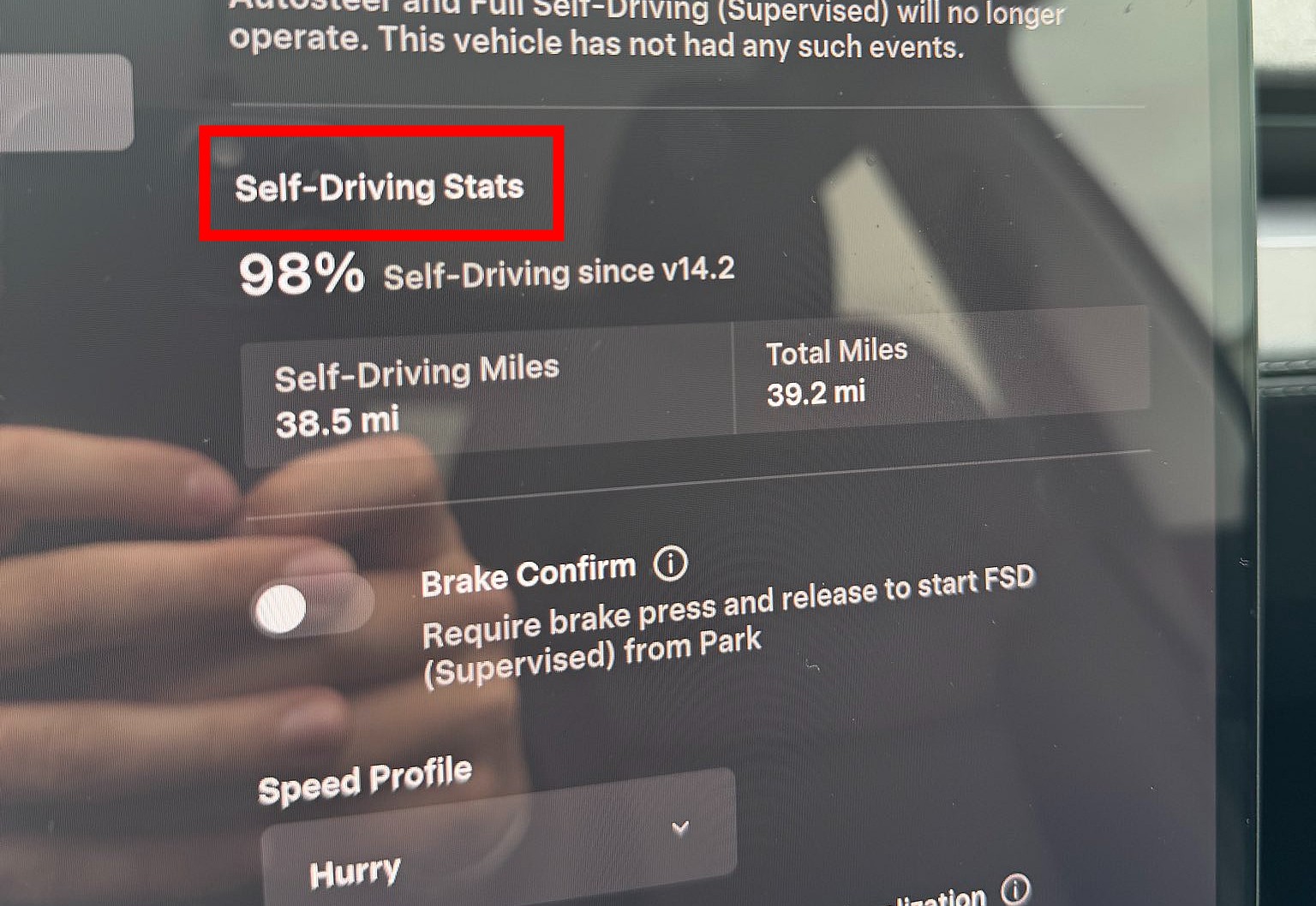
Tesla Full Self-Driving v14.2 rolled out late last week to Early Access Program (EAP) members, but its best feature is not what you think.
While Tesla has done a great job of refining the performance of the Full Self-Driving suite with the latest update, there are some other interesting additions, including one that many owners have requested for some time.
Upon the release of v14.2, many owners recognized the Blue Dot next to the Autopilot tab in Vehicle Settings, notifying them of a new feature. What was included as a new feature in the new update was a Full Self-Driving stats feature, which now will show you how many miles you’ve traveled in total, and how many of those miles were driven using FSD:
🚨 The coolest non-driving change of Tesla Full Self-Driving v14.2 pic.twitter.com/HOJcFaV2Ny
— TESLARATI (@Teslarati) November 21, 2025
The feature seems to be more of a bragging rights thing than anything, but it will also give drivers a good idea of how many miles they are using Full Self-Driving for. Those who use telematics-based insurance services will also be able to run experiments of their own, and could determine whether their premiums are impacted by the use of Full Self-Driving, and whether it is more advantageous to use over manual driving.
Tesla rolled out numerous other improvements with Tesla Full Self-Driving v14.2, most notably, the company seems to have resolved previous complaints about brake stabbing and hesitation. This was a major complaint in v14.1, but Tesla has seemed to resolve it with this newest branch of the FSD suite.
There were also improvements in overall operation, and it was notably smoother than past versions. Speed Profiles are seemingly refined as well, as they seem much more fixed on how fast they will travel and how aggressive they will be with things like passing cars on freeways and lane changes.
In future updates, Tesla plans to add Parking Spot selection, along with overall operational improvements. However, CEO Elon Musk recently said that the next branch, Full Self-Driving v14.3, will be where the “final piece of the puzzle is placed.” Tesla believes it is close to solving autonomy, so v14.3 could be a major jump forward, but it remains to be seen.
News
Tesla adjusts crucial feature as winter weather arrives
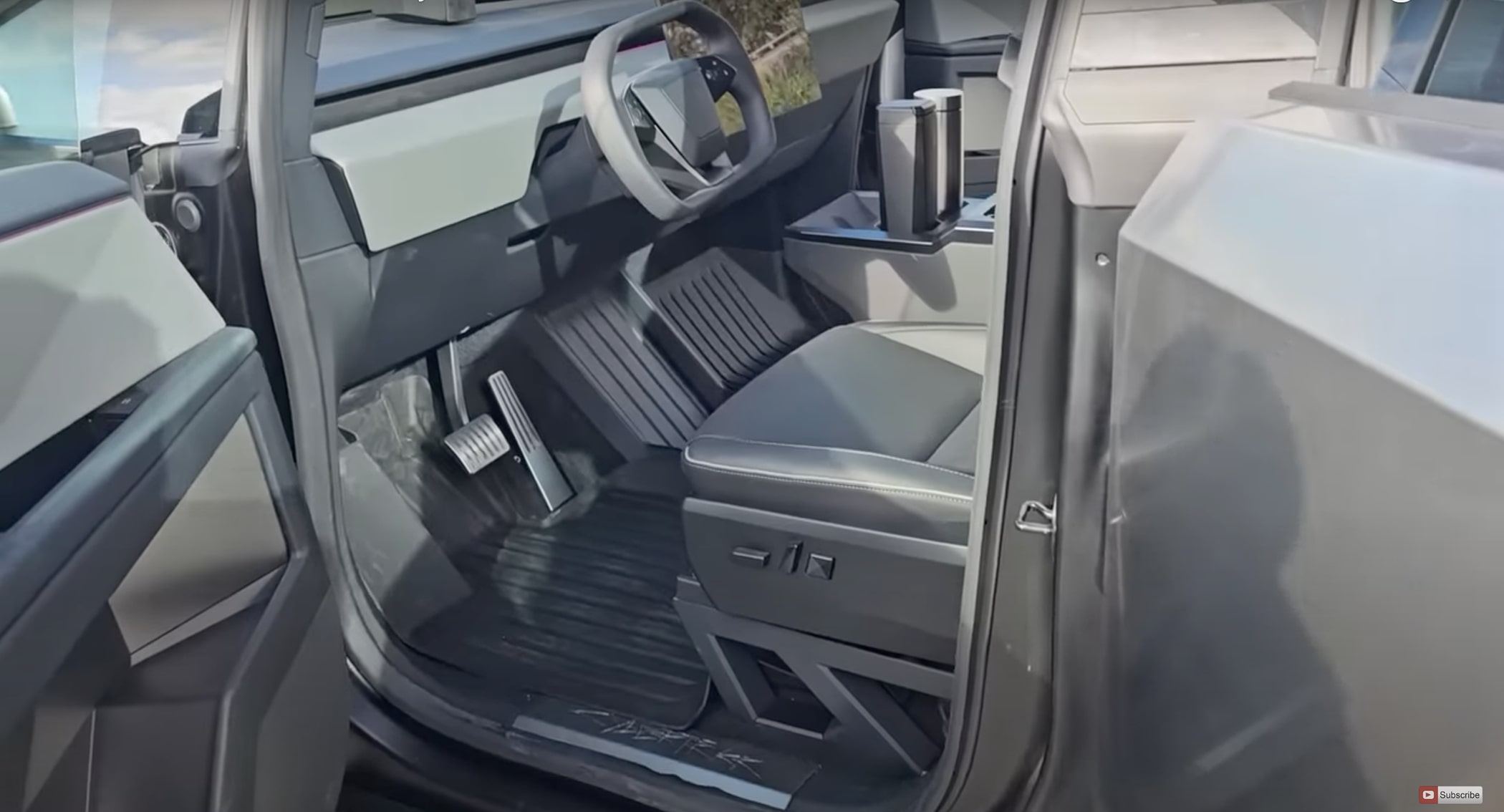
Tesla has adjusted the functionality of a crucial climate feature as Winter weather has started to arrive throughout some parts of the United States. The new feature was highly requested by owners.
Tesla has a Cabin Overheat Protection feature that helps keep the temperature regulated if it reaches a certain threshold. Inversely, it can be used in cold weather as well, which will automatically warm the cabin if it sinks to a temperature that is too low for the owner’s comfort.
This is a great way to keep the cabin either warmed up just enough or cooled down just enough so that it never gets too hot or too cold. Extreme temperatures could damage certain parts of the vehicle or damage personal belongings that are kept inside the car.
Overheat protection is a great thing to have in hot climates like Arizona or Texas, especially with the Premium trims of the Model 3 and Model Y, which feature a glass roof.
Many owners appreciate the feature, but they argue that using it at home will utilize too much energy, especially during extreme temperatures. For a while, many Tesla fans have requested an option to disable this feature when the car is parked at home, which the company recently added, according to Not a Tesla App.
The feature is part of Software Version 2025.44.3, and the release notes state:
“You can now choose Exclude Home when Cabin Overheat Protection or No A/C is enabled.”
Tesla has been great at listening to what owners want with new features, and this is one that will reserve some charge and prevent unnecessary utilization of available power, especially as the car is parked at home. If owners want to condition the cabin or get the car ready for operation with a comfortable interior, they can utilize the Tesla app to adjust the climate.
Elon Musk
Tesla CEO Elon Musk sends rivals dire warning about Full Self-Driving
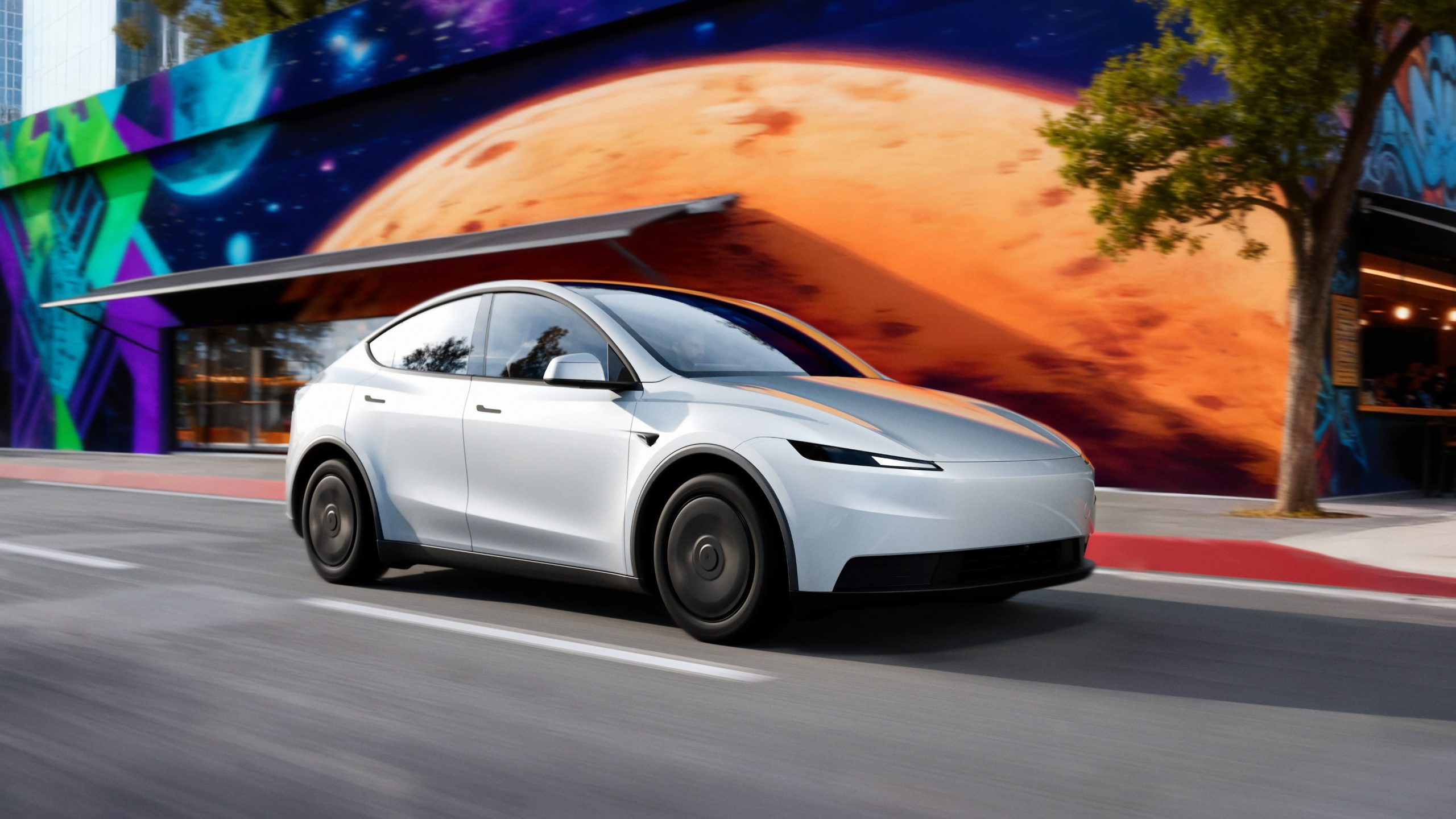
Tesla CEO Elon Musk revealed today on the social media platform X that legacy automakers, such as Ford, General Motors, and Stellantis, do not want to license the company’s Full Self-Driving suite, at least not without a long list of their own terms.
“I’ve tried to warn them and even offered to license Tesla FSD, but they don’t want it! Crazy,” Musk said on X. “When legacy auto does occasionally reach out, they tepidly discuss implementing FSD for a tiny program in 5 years with unworkable requirements for Tesla, so pointless.”
I’ve tried to warn them and even offered to license Tesla FSD, but they don’t want it! Crazy …
When legacy auto does occasionally reach out, they tepidly discuss implementing FSD for a tiny program in 5 years with unworkable requirements for Tesla, so pointless. 🤷♂️
🦕 🦕
— Elon Musk (@elonmusk) November 24, 2025
Musk made the remark in response to a note we wrote about earlier today from Melius Research, in which analyst Rob Wertheimer said, “Our point is not that Tesla is at risk, it’s that everybody else is,” in terms of autonomy and self-driving development.
Wertheimer believes there are hundreds of billions of dollars in value headed toward Tesla’s way because of its prowess with FSD.
A few years ago, Musk first remarked that Tesla was in early talks with one legacy automaker regarding licensing Full Self-Driving for its vehicles. Tesla never confirmed which company it was, but given Musk’s ongoing talks with Ford CEO Jim Farley at the time, it seemed the Detroit-based automaker was the likely suspect.
Tesla’s Elon Musk reiterates FSD licensing offer for other automakers
Ford has been perhaps the most aggressive legacy automaker in terms of its EV efforts, but it recently scaled back its electric offensive due to profitability issues and weak demand. It simply was not making enough vehicles, nor selling the volume needed to turn a profit.
Musk truly believes that many of the companies that turn their backs on FSD now will suffer in the future, especially considering the increased chance it could be a parallel to what has happened with EV efforts for many of these companies.
Unfortunately, they got started too late and are now playing catch-up with Tesla, XPeng, BYD, and the other dominating forces in EVs across the globe.








